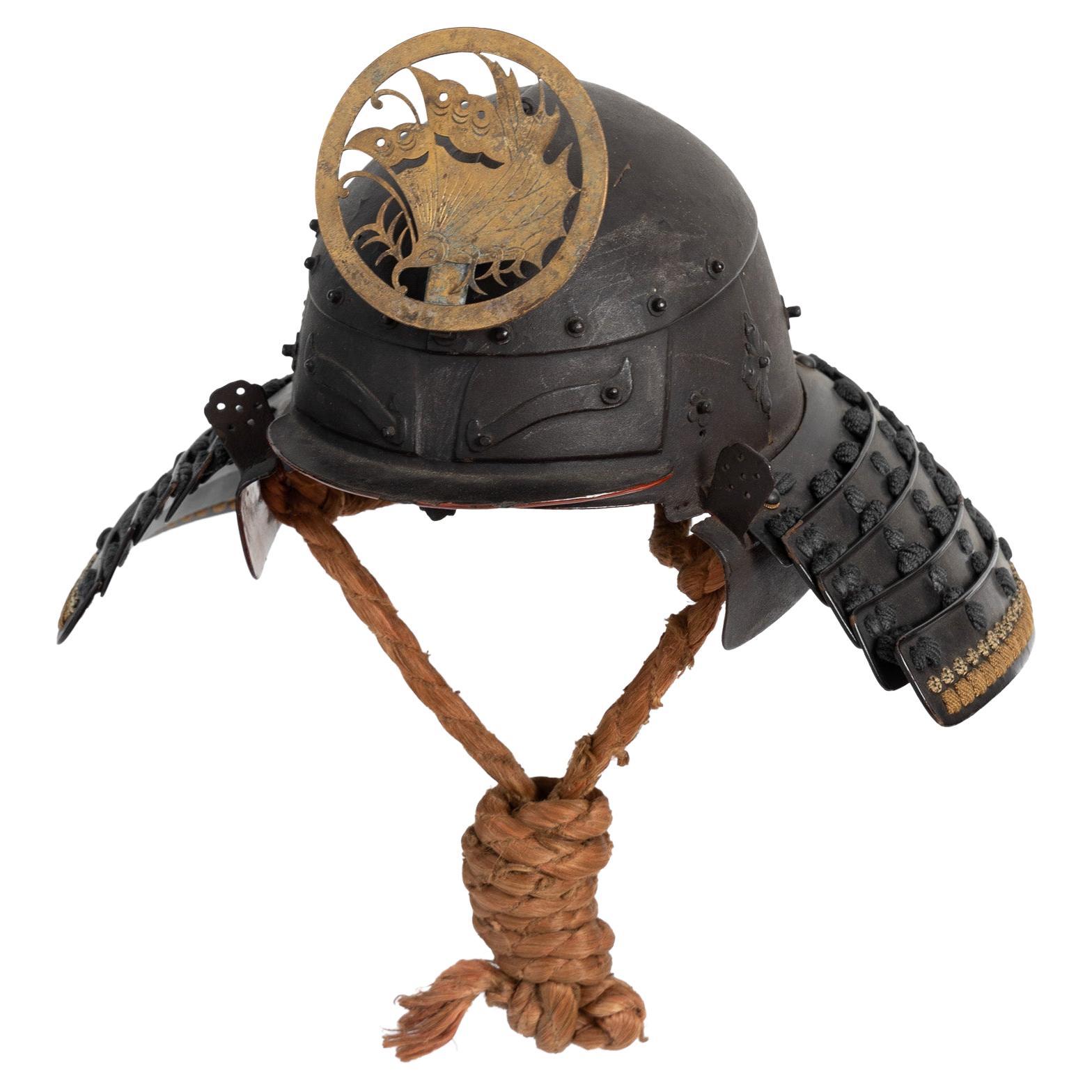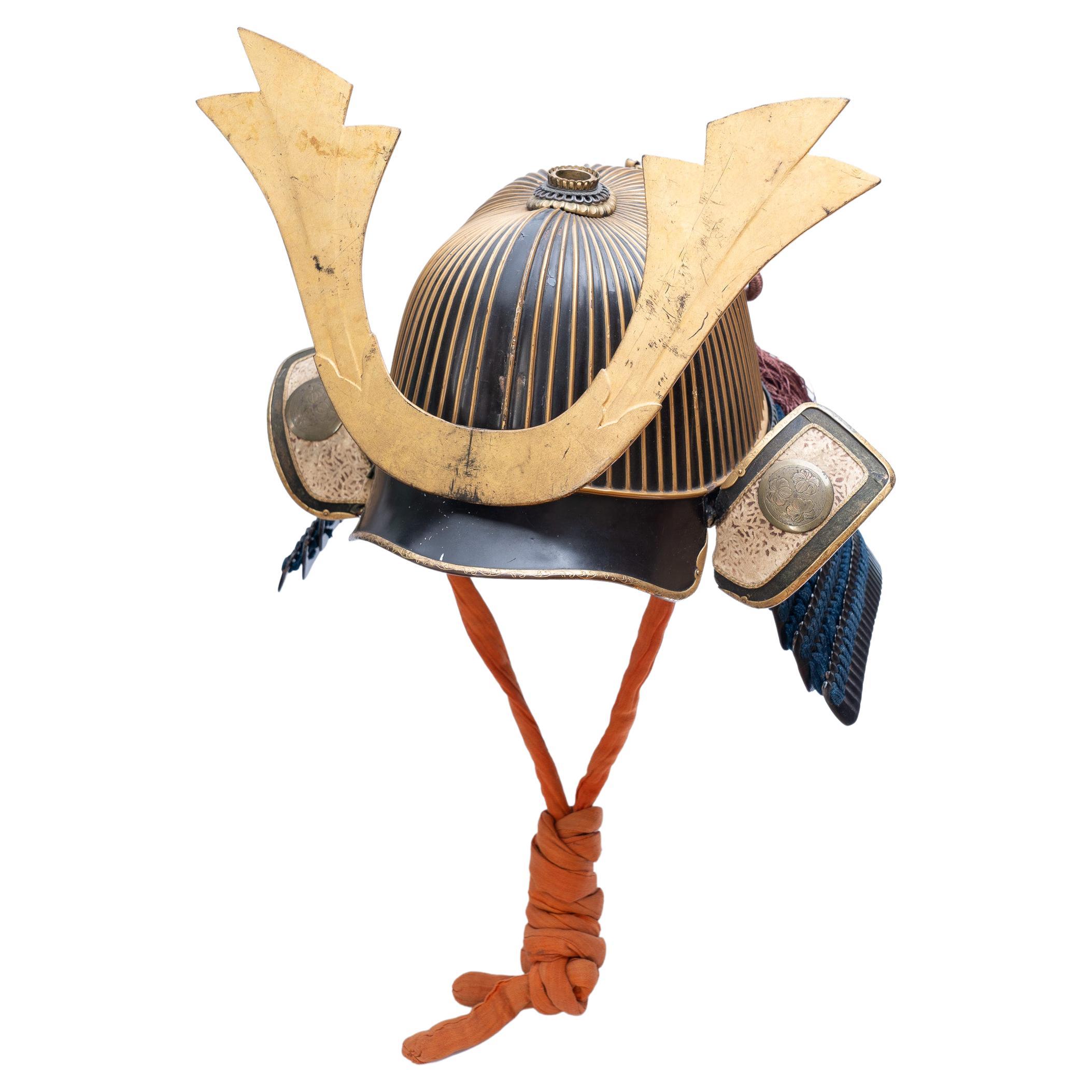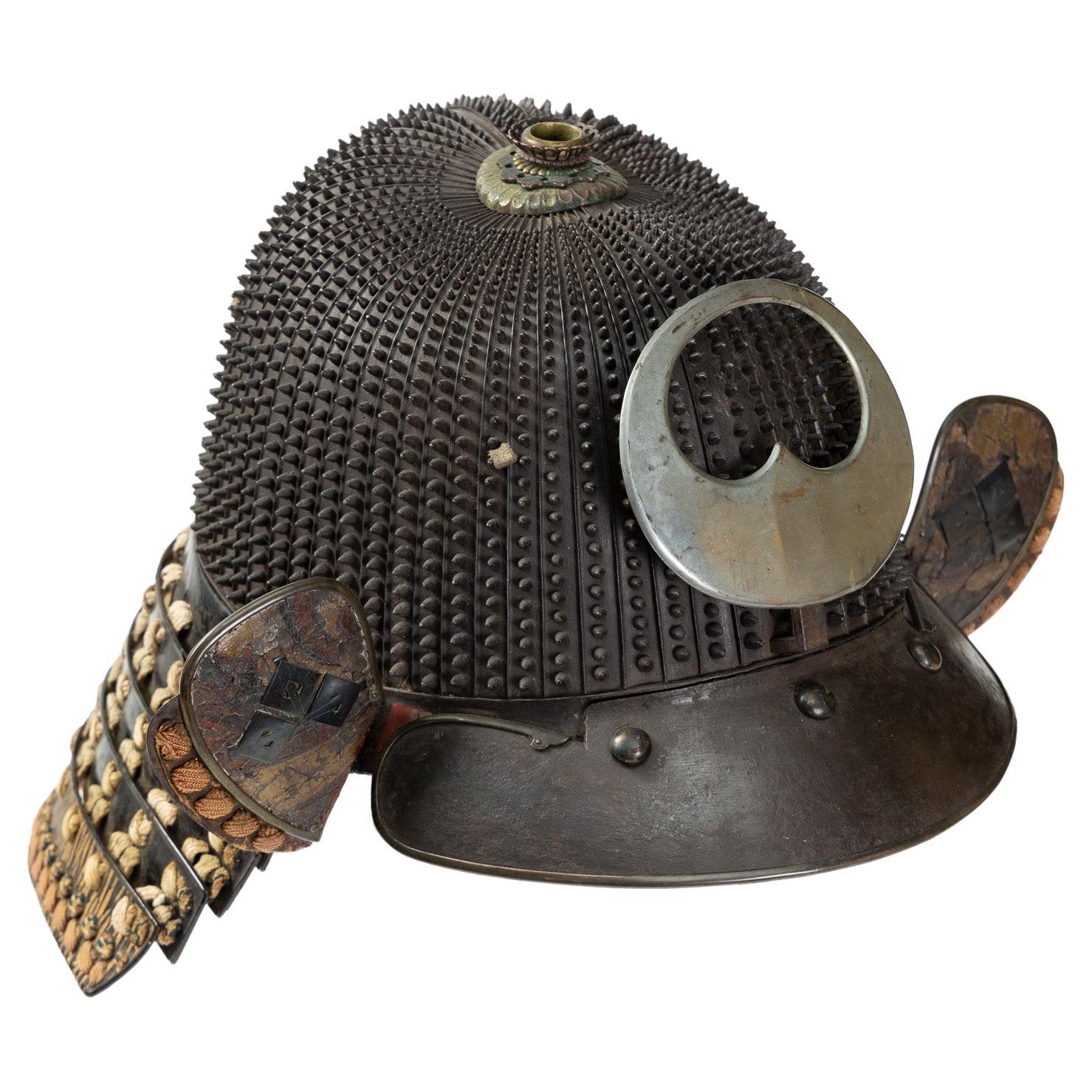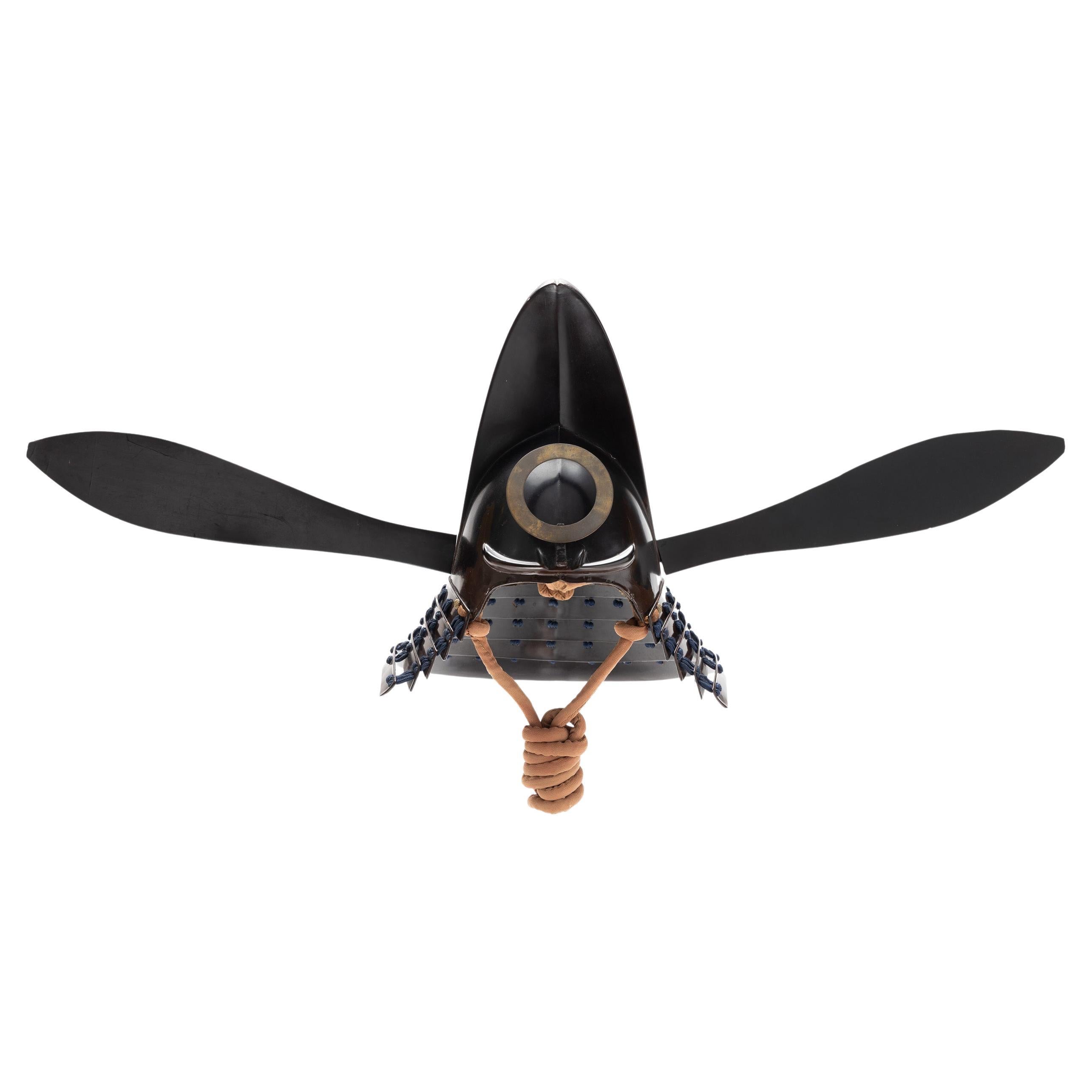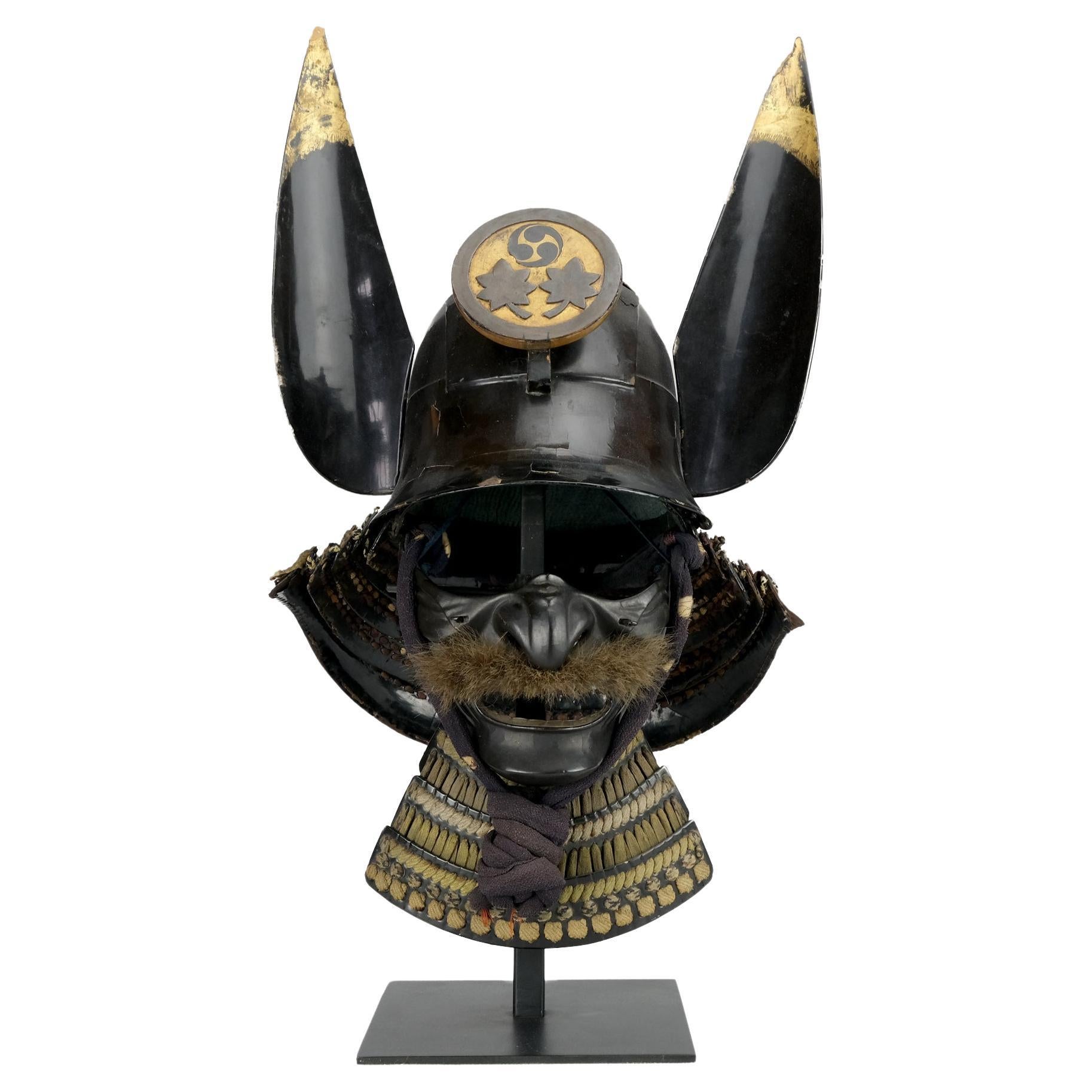Items Similar to Sogonari Kabuto Samurai Helmet Shaped as a Human Head Early Edo Period
Want more images or videos?
Request additional images or videos from the seller
1 of 8
Sogonari Kabuto Samurai Helmet Shaped as a Human Head Early Edo Period
About the Item
Sogonari Kabuto
Samurai Helmet shaped as a Human Head
Early Edo Period (1615 - 1867).
Three-plates kawari kabuto covered with tawny hair to resemble a human head.
Samurai helmets with this shape are not unusual, but a feature worth noting on this kabuto is that the hair covers the whole helmet, including the visor (mabizashi), while the front side of these samurai helmets is usually lacquered. Notable exceptions with the same surface treatment are two well-known kabuto: one from the armor that Hideyoshi presented to Date Masamune (now in the Sendai City Museum) and another one from an armor, again from Momoyama period, in the collection of Osaka Castle.
- Dimensions:Height: 13.78 in (35 cm)Width: 15.75 in (40 cm)Depth: 15.75 in (40 cm)
- Materials and Techniques:Fur
- Period:1700-1709
- Date of Manufacture:circa 1700
- Condition:
- Seller Location:Milano, IT
- Reference Number:1stDibs: LU4250233152362
About the Seller
5.0
Recognized Seller
These prestigious sellers are industry leaders and represent the highest echelon for item quality and design.
Established in 2005
1stDibs seller since 2018
10 sales on 1stDibs
Typical response time: 1 hour
- ShippingRetrieving quote...Ships From: Milano, Italy
- Return PolicyA return for this item may be initiated within 7 days of delivery.
More From This SellerView All
- Okitenugui Kabuto Samurai Helmet Shaped as a Head Towel Saika, Early Edo PeriodLocated in Milano, ITOkitenugui kabuto Samurai helmet shaped as a head towel Saika, early Edo period, 17th century The Haruta armorers who moved to Kii province in the early 17th century, took the name from the village where they worked, Saika, near Wakayama, possibly on request of the local daimyo, Asano Yukinaga, a great armour amateur. Specialised in the construction of plate helmets, they produced mainly two typologies of kabuto: one with six plates covered with a chrysanthemum-shaped plate on top and one shaped as a “head towel”, called okitenugui. The latter type of kabuto employs very heavy plates crafted in a curved manner and was improved in order to make it resistant to firearms. This okitenugui kabuto features some distinctive decorations of the Haruta school, including the application of cut-out iron elements, including eyebrows, washers and lozenge-shaped decorations on the sides. The ring on the top, however, is a rare feature and could be used to hold a small war flag.Category
Antique 17th Century Metalwork
MaterialsIron
- Sujibachi kabuto 62-plate samurai helmet Haruta school, Edo periodLocated in Milano, ITSujibachi kabuto 62-plate samurai helmet Haruta school, Edo period 17th-18th century A lamellar helmet consisting of sixty-two plates joined with five rows of rivets. The surface is...Category
Antique Mid-17th Century Japanese Metalwork
MaterialsIron
- Koboshi Kabuto, Samurai Helmet with Standing Rivets Haruta SchoolLocated in Milano, ITKoboshi kabuto Samurai helmet with standing rivets Haruta School Early Edo Period, 17th century A 62-plate koboshi-bachi [helmet bowl with small s...Category
Antique 17th Century Japanese Arms, Armor and Weapons
MaterialsIron
- Tōkanmuri Kabuto Samurai Helmet in the Shape of a Court CAPLocated in Milano, ITTokanmuri kabuto Samurai helmet in the shape of a court cap Momoyama to early Edo Period 17th century The wearing of helmets that reproduced the shapes of traditional ...Category
Antique 17th Century Japanese Metalwork
MaterialsIron
- Suji-bachi kabuto and menpo Signed by Myōchin Muneaki and dated 1853Located in Milano, ITSuji-bachi kabuto and menpo Signed by Myōchin Muneaki and dated 1853 Signature: Kaei 6 - Ushidoshi Oshu Nihonmatsu-ju Myōchin Ki (no) Muneaki saku Made in 1853 by Myōchin Ki Muneak...Category
Antique 18th Century and Earlier Metalwork
MaterialsIron
- Samurai Mask with a Fierce Expression Ressei MenpoLocated in Milano, ITSamurai mask with a fierce expression Ressei Menpo DATE Edo period (1615 - 1867), 18th century A red lacquered high-level mask, with fierce (res...Category
Antique 18th Century Japanese Metalwork
MaterialsIron
You May Also Like
- Japanese Samurai Helmet Kabuto Edo Period (1603-1867)Located in Hampstead, QCA Japanese Samurai black-lacquered helmet (kabuto) in suji bachi style and of a goshozan shape consisting of the: - main dome (hachi) made from 16 plates in natural iron riveted to...Category
Antique Early 19th Century Japanese Edo Metalwork
MaterialsIron
- Samurai Helmet "Zunari Kabuto" - Early Edo (circa 1610)Located in Paris, FRSamurai Helmet "Zunari kabuto" with 3 black lacquered iron plates. Japan, early EDO period, circa 1610. Neck protector (shikoro), 5-strip hineno, laced brown, beige and green. Centra...Category
Antique Early 17th Century Japanese Edo Antiquities
MaterialsIron
- Pair of 18th Century Japanese Edo Period Lacquered Samurai Iron StirupsLocated in Dallas, TX18th century Japanese Edo period Lacquered Samouri Iron stirups with original wooden lacquered insoles. Truly a beautiful pair of Japanese ...Category
Antique Late 18th Century Japanese Edo Metalwork
MaterialsIron
- Japanese Spear, Edo Period, SignedLocated in Stockholm, SEA Japanese long spear. Partly lacquered wood with a forged spearhead which is signed. High quality as most of Japanese items. Provenance: early 20th century Swedish collection.Category
Antique 19th Century Japanese Metalwork
MaterialsIron
- Antique Japanese Tomyodai, Edo periodLocated in Point Richmond, CAJapanese Tomyodai, a temple light stand created of iron and copper in the upright form of the Tama (Buddhist flaming jewel) with 13 ringlet projections to...Category
Antique Mid-19th Century Japanese Edo Metalwork
MaterialsCopper, Iron
- Japanese Nanban Tsuba with Dragons, Edo Period, early 19th century, JapanLocated in Austin, TXA dramatic Japanese iron tsuba in the nanban (foreign) style, decorated with dragons and openwork and inlaid with silver and gold, Edo Period, early 19th century, Japan. The fantast...Category
Antique Early 19th Century Japanese Edo Metalwork
MaterialsGold, Iron, Silver
